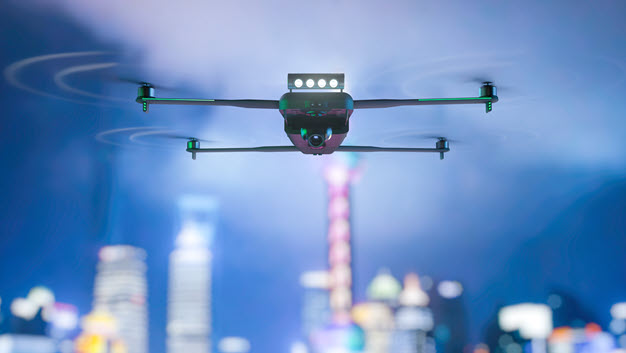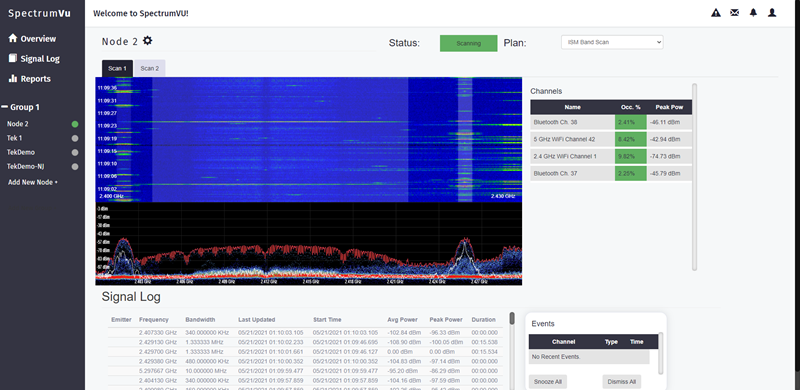

In a few short years, the number of drones, or unmanned aerial vehicles (UAVs), purchased has soared. In the US alone, the FAA projects the small model hobbyist UAV fleet will more than double from an estimated 1.1 million vehicles in 2017 to 2.4 million units by 2022. Worldwide, Teal Group’s World Civil UAS Market Profile and Forecast projected in 2018 that non-military UAS production (Commercial, consumer and civil government systems) will total $88.3 billion in the next decade, soaring from $4.4 billion worldwide in 2018 to $13.1 billion in 2027, a 12.9% compound annual growth rate.
While most drone operators use good judgement when flying their drones, unfortunately, some do not, as evidenced by a number of drone related headlines:
- “Boeing 737 Passenger Jet Damaged in Possible Midair Drone Hit,” Bloomberg.
- “Gatwick Airport: Drones ground flights,” BBC News.
- “FAA says drone sightings temporarily halted traffic into Newark airport,” Reuters.
In situations where a drone is operating where it shouldn’t, the potential ramifications can be catastrophic. As a result, organizations need real-time, accurate, simple to operate and cost-effective solutions for detecting drones flying in or near restricted airspace.
First… a Few Drone Basics
When looking for a drone detection solution, it is important to have a basic understanding of how most hobbyist and commercial drones operate.
Nearly all hobbyist and commercial drones:
- Are controlled locally within a visual range of about 1000 ft.
- Are controlled remotely within 2-3 miles using First Person View (FPV)
- Operate in the 2.4 GHz unlicensed band for control (approx. 80 MHz bandwidth)
- Use 5.8 GHz unlicensed band for first person view (FPV) video feeds (20 MHz or less)
- Employ return to home (RTH) when control signals are lost or weak
- Use transmission signal technologies available from only a few suppliers, making identifying a drone easier
- Utilize drone control signals that normally hop across multiple frequencies and can be up to 80 MHz wide
- The FCC has designated that drones can only be operated in the unlicensed bands, including the 2.4 GHz, 5.8 GHz, 900 MHz and 433 MHz bands
While there are basic manual methods for detecting a drone’s presence, the following is a more advanced way to set up an automated drone detection system.
Setting up an Automated Drone Detection System
While the headlines cited above related to sightings involving airports, drones have created concerns for other entities as well, including event venues and military bases. With the large perimeter that needs to be monitored, having an automated drone detection system can detect drone presence without interrupting other operations.

Figure 1. An example of how an array of spectrum analyzers might detect a drone. Source: faa.gov
Creating an automated drone detection system is simplified by networking multiple Tektronix RSA306B, or RSA500 Series spectrum analyzers together and utilizing software such as SpectrumVu®. SpectrumVu is an advanced software package that provides fully autonomous monitoring of the RF spectrum and can record unknown spectral events and generate alerts upon the discovery of unknown signals.
To set up an automated drone detection system, nodes, which include the spectrum analyzer, an antenna and an Intel NUC, are set up around the outside perimeter as illustrated in the La Guardia Airport diagram. The nodes can be networked to a central operations center to provide comprehensive coverage of the perimeter and flight paths. By utilizing multiple nodes, it’s possible to identify a drone’s location on the x-y-z axis.
With this system, the RF spectrum is autonomously monitored 24/7. Triggers can also be set on unknown signals or on signals with power above user-defined thresholds to create alerts. Known, unknown, and event signals are captured by the real-time spectrum analyzer and displayed on the SpectrumVu dashboard as illustrated.

Figure 2. SpectrumVu software can automatically send an alert to security personnel whenever a suspicious signal is detected.
Recent innovations in neural network technology are utilized in SpectrumVu to automatically identify likely drone signals. SpectrumVu’s StepNStare mode can step or tune to a 40 MHz chunk of the RF spectrum, record the I/Q data, and then step to a different 40 MHz band. This process repeats across the unlicensed drone spectrum, enabling the user to monitor the entire spectrum by processing small I/Q files continuously, using machine learning and waveform shapes. When the waveform properties match the neural network stored signal properties, SpectrumVu issues an alert to indicate the likely presence of a drone.
By utilizing machine learning, the unique RF characteristics of both the drone control signals and the drone first person video (FPV) video downlinks can be identified within the real-time bandwidth of the RSA automatically.
For additional analysis, unknown signals can be stored in an SQL database to accelerate drone identification and support additional analysis of the RF spectrum environment.
While drones provide hours of enjoyment and offer benefits for many applications, a misused drone can create dangerous situations. A Tektronix real-time spectrum analyzer can be a valuable tool in monitoring the RF environment and detecting a drone’s presence as a stand-alone or networked device. For organizations concerned with drones operating where they shouldn’t, it is important to invest in solutions that provide real-time awareness, 24/7 monitoring and automated alert capabilities.


